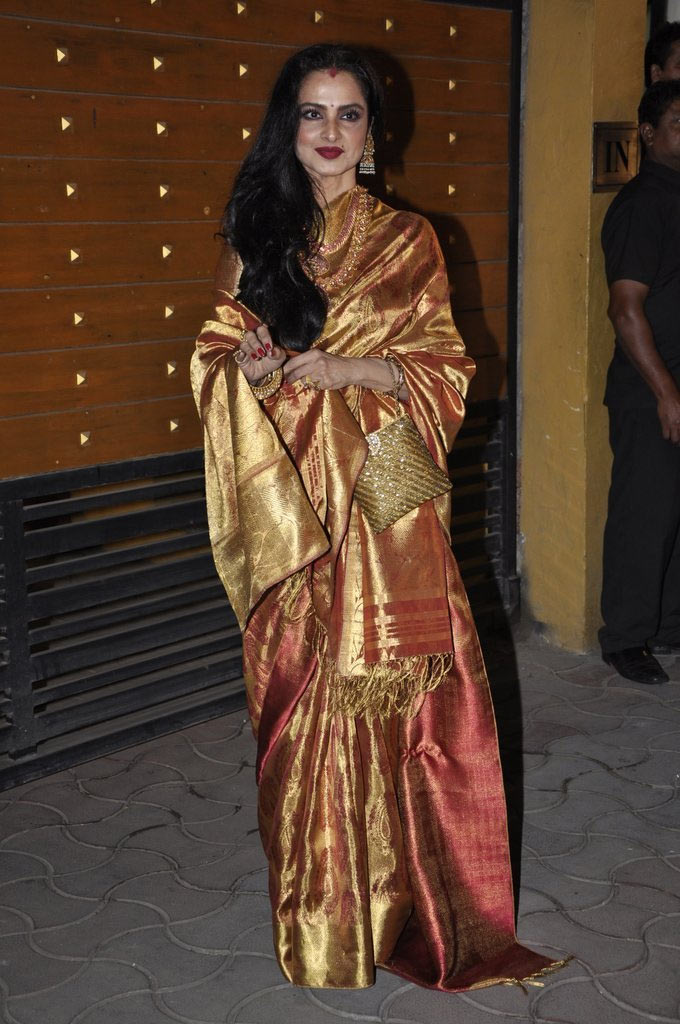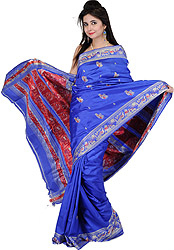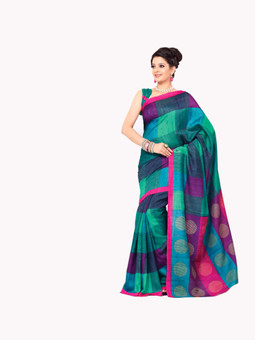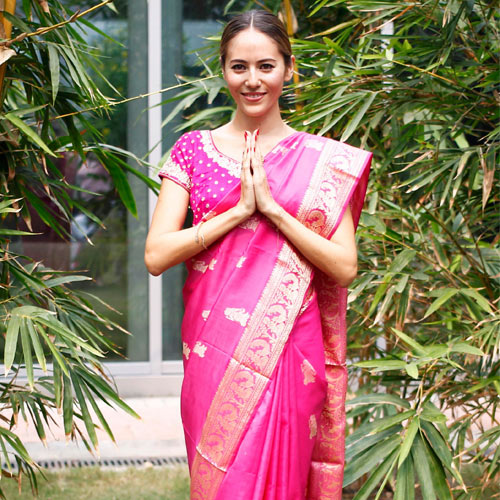Source(google.com.pk)
In the recent past, the traditional sari had made way for the comfortable salwar-kameez combination and western clothes, especially among young Indian women. However, it has had a revival lately, with the advent of the designer sari. Usually made from lighter (and manageable) fabrics such as crepe, chiffon and georgette, the designer sari is a bolder statement with strong colors and abstract prints. The traditional sari has been updated by well-known Indian designers such as Tarun Tahiliani and Satya Paul as well by international fashion houses such as Hermes and Louis Vuitton, leaving the fashionista spoiled for choice.
Indian civilization has always placed a tremendous importance on unstitched fabrics like the sari and dhoti, which are given sacred overtones. The belief was that such a fabric was pure; perhaps because in the distant past needles of bone were used for stitching. Hence even to the present day, while attending pujas or other sacred ceremonies, the men dress up in dhotis while women wear the sari.
The Indian Sari, like so many other textiles, gives the lie to the hierarchical distinction made between fine arts and crafts. The approximate size of a sari is 47 by 216 inches. Although it is an untailored length of cloth, the fabric is highly structured and its design vocabulary very sophisticated. The main field of the sari is framed on three sides by a decorative frieze of flowering plants, figurative images, paisleys, or abstract symbols.
Two of the borders define the edges of the length of the sari and the third comprises the end piece, which is a more complex version of the other two borders. This end piece is the part of the sari that is draped over the shoulder and left to hang over the back or front, known popularly as the Pallu or Anchal.
The pallu usually elaborates the theme found in the two borders and the actual field of the sari, a sort of repetition and amplification in the manner of the Indian musical mode, the raga. This beautiful metaphor thus compares the two narrow borders to the introductory recital of the pure notes and the pallu to the song.
The design of the Indian Saree, whether woven, embroidered, painted or block-printed, needs to maintain the proportion and balance between the actual field of the sari, the borders and the pallu. The pattern creates its own rhythm.
Each sari in the modern era requires a matching set of blouse and underskirt for draping it. All saris in our collection come along with a matching blouse piece. You can also have the blouse and petticoat tailored to your custom measurements, at a nominal extra cost.
Back in the old days, people of different cultures wore traditional clothes every day. For men, outfits were usually variations of shirts and pants. For women, dress was much more assorted and diverse. Today, however, things are no longer so. Nowadays, people of different cultures tend to get clothes off the racks of department stores and shopping malls. They cram those factory-made clothes into their wardrobes and only wear traditional garments on special occasions. Thankfully, the trend is not prevalent everywhere. In India, women still wear the saree (also spelled as sari) every day as their ancestors did for thousands of years. The dresses' styles and designs are so popular that clothing designers worldwide often incorporate them into their own works of art.
2 Technically speaking, a saree is merely a long piece of unstitched fabric worn over a blouse and a petticoat (underskirt). It has neither sleeves nor trousers. There are different styles of the traditional garment. Among the numerous choices, the "Nivi" is by far the most popular. For this particular form, the woman would first wrap the saree around her waist and tuck one end of it into the top of her petticoat. She then would drape the loose end (called the pallu or pallav) diagonally across her front and let it drop over her shoulder. The long end that hangs freely from the back of her shoulder is often adorned with intricate designs and beautiful ornaments.
3 Though the saree debuted at the beginning of India's first civilization about 4,500 years ago, its origin is still murky today. Due to the lack of written records, we do not know how ancient Indians came to make clothing out of a fabric ranging from 5 to 9 yards. We do know, however, that their specialty in weaving cloth with sophisticated patterns and vibrant colors has long captivated people.
Indian Sarees From India Indian Sarees 2014 Designs Online For Kids Images Design Patterns Online Shopping Wedding Blouse Designs

Indian Sarees From India Indian Sarees 2014 Designs Online For Kids Images Design Patterns Online Shopping Wedding Blouse Designs

Indian Sarees From India Indian Sarees 2014 Designs Online For Kids Images Design Patterns Online Shopping Wedding Blouse Designs

Indian Sarees From India Indian Sarees 2014 Designs Online For Kids Images Design Patterns Online Shopping Wedding Blouse Designs

Indian Sarees From India Indian Sarees 2014 Designs Online For Kids Images Design Patterns Online Shopping Wedding Blouse Designs

Indian Sarees From India Indian Sarees 2014 Designs Online For Kids Images Design Patterns Online Shopping Wedding Blouse Designs

Indian Sarees From India Indian Sarees 2014 Designs Online For Kids Images Design Patterns Online Shopping Wedding Blouse Designs
Indian Sarees From India Indian Sarees 2014 Designs Online For Kids Images Design Patterns Online Shopping Wedding Blouse Designs

Indian Sarees From India Indian Sarees 2014 Designs Online For Kids Images Design Patterns Online Shopping Wedding Blouse Designs

Indian Sarees From India Indian Sarees 2014 Designs Online For Kids Images Design Patterns Online Shopping Wedding Blouse Designs

Indian Sarees From India Indian Sarees 2014 Designs Online For Kids Images Design Patterns Online Shopping Wedding Blouse Designs
No comments:
Post a Comment